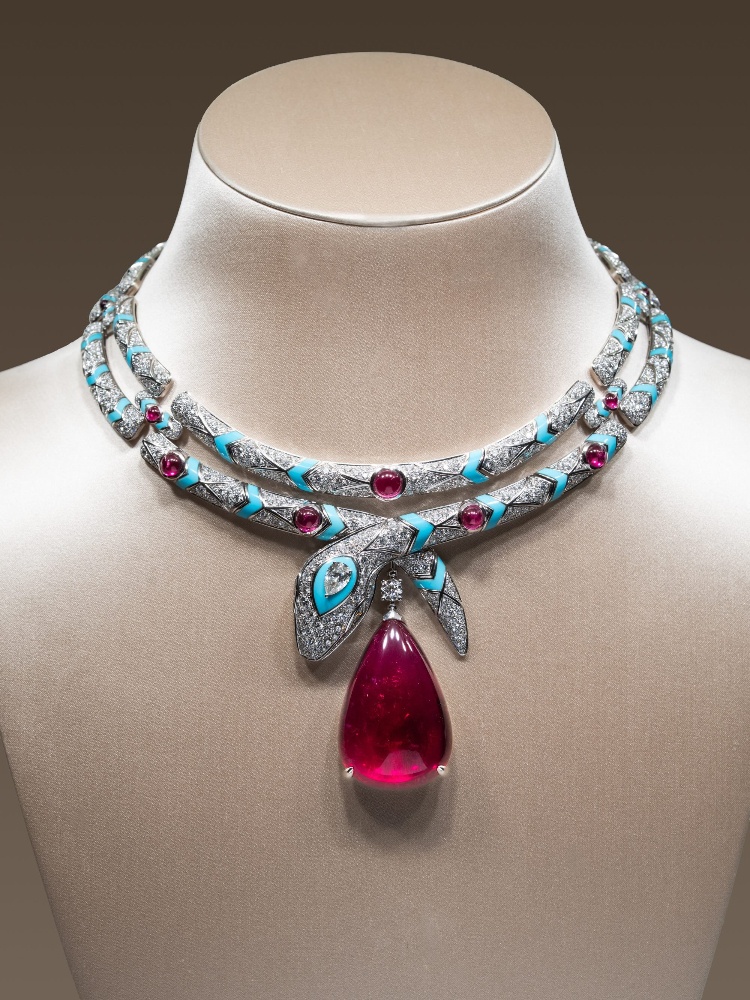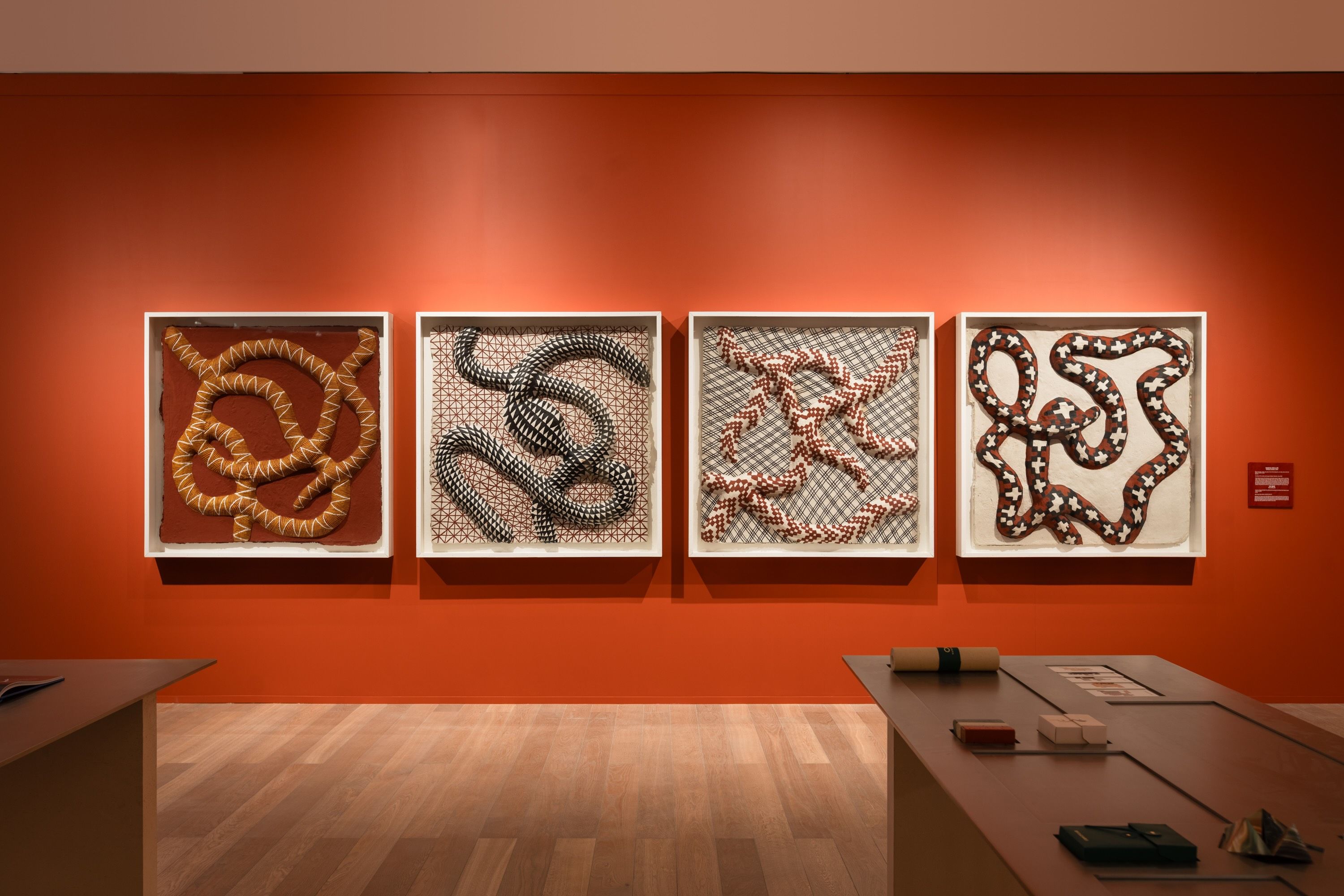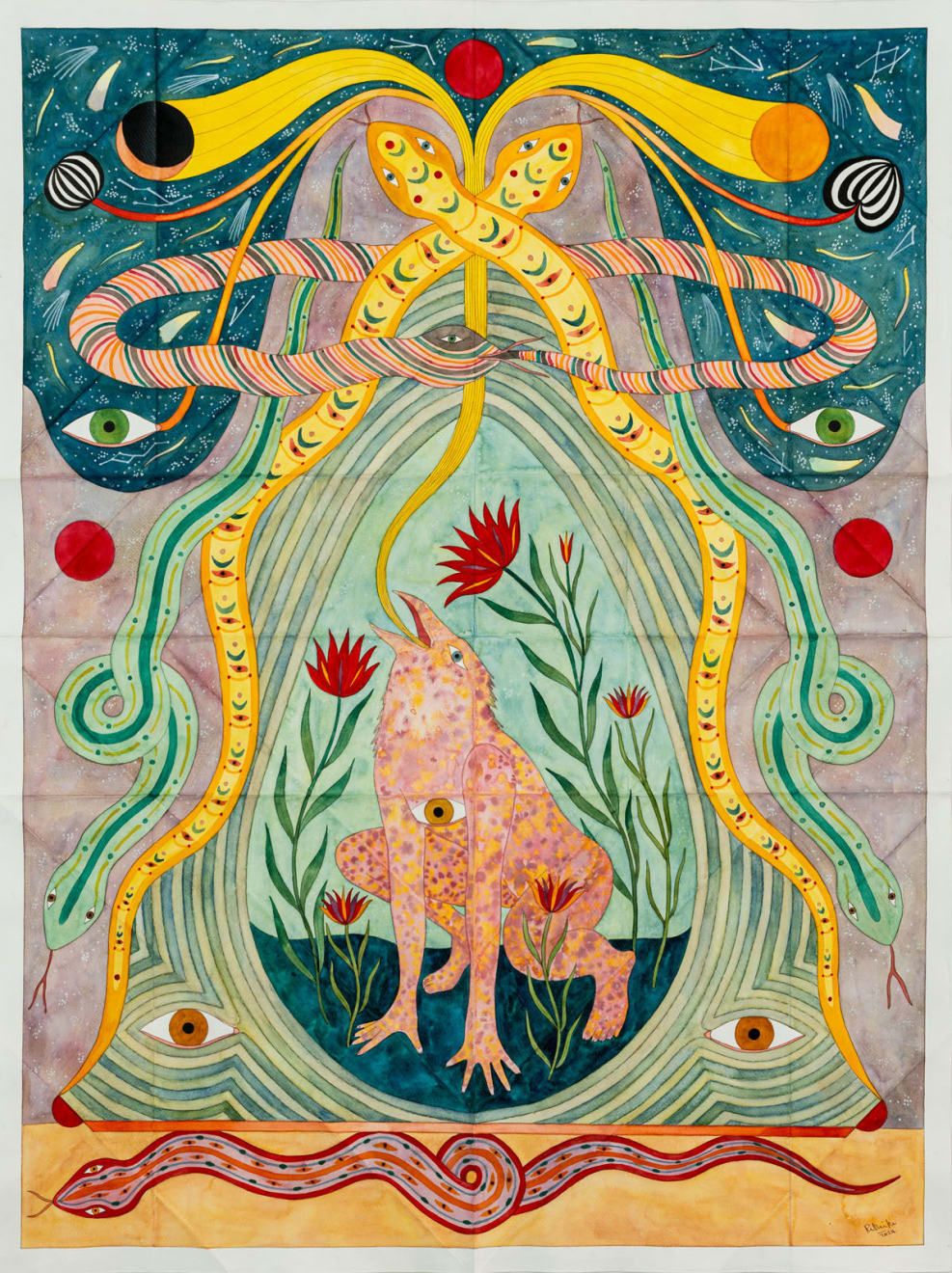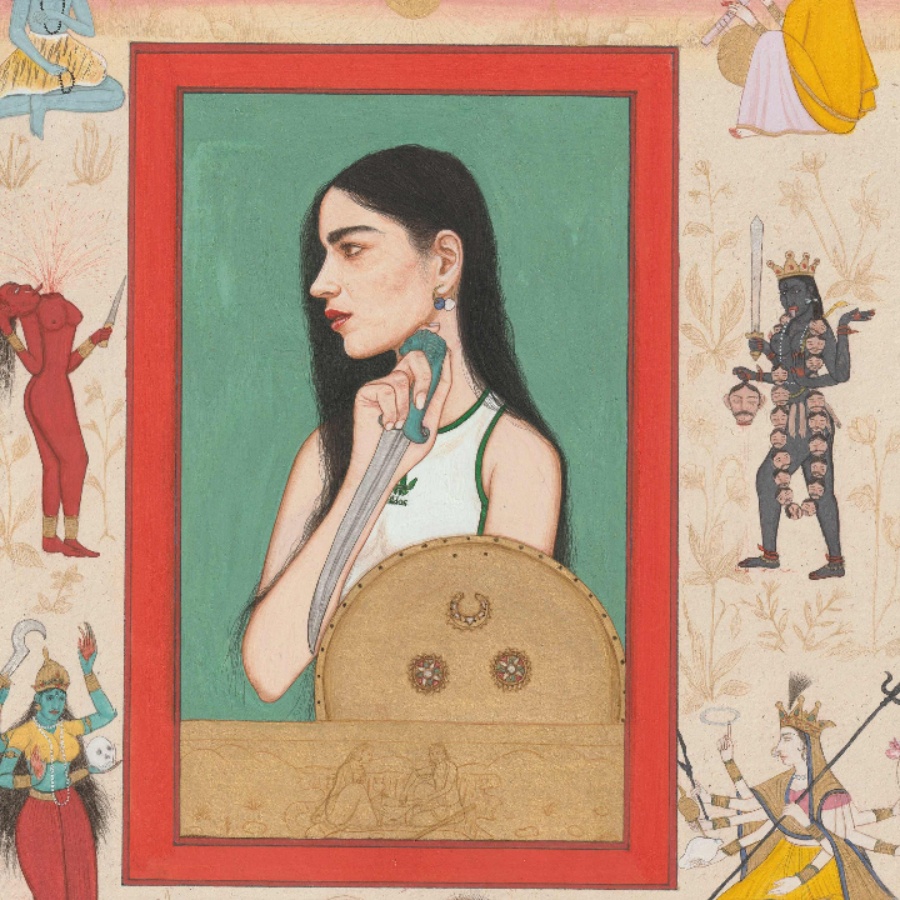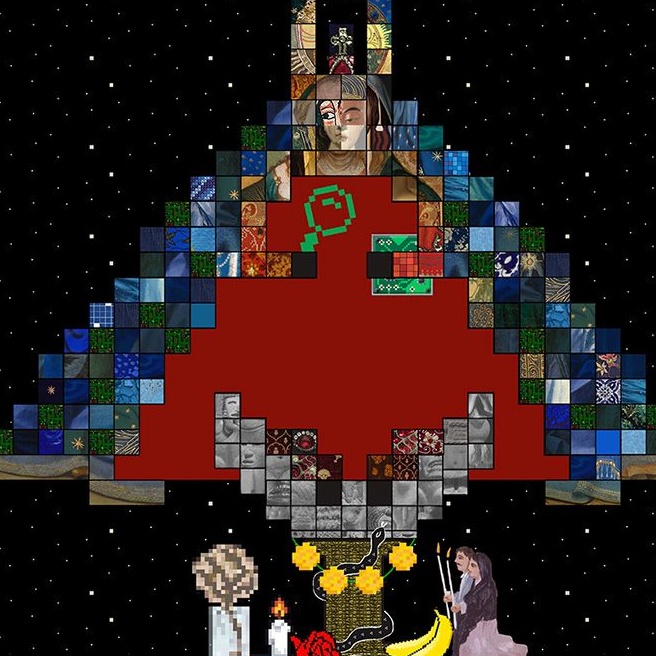“Jewellery is not separate from art, the two are united,” says Sean Anderson, artistic director of the Bvlgari Serpenti Infinito exhibition that opened its doors to the public on Wednesday night. “As jewellery becomes an extension of ourselves and the way we portray ourselves, so do art and artists react and portray themselves in their works.”
Anderson is speaking to a group of journalists that he’s taking on a walkthrough of the newly-opened exhibition, and he’s referring to the parallel stories of fine jewellery and watches from the Bvlgari archives and the Contemporary art and sculpture from India and abroad, which are on display. But beyond being a form of expression, there’s another significant connection between the jewellery and art on display—they’re all inspired, in some form, by the snake.
It’s 2025, and clearly the Year Of The Snake at Mumbai’s Nita Mukesh Ambani Cultural Centre, where the exhibit presents a showcase of art and jewellery that bites. Whether it’s the eternal Ananta Shesha, Lord Vishnu’s mount; the python who was a protector from Roman mythology; the snake from the Chinese Zodiac that signifies charm and intelligence; or even the serpent who tricked Eve in the Garden of Eden, the sinuous reptile has long fascinated storytellers from across the globe including the high jewellery house of Bvlgari. The house’s Serpenti Infinito exhibition offers a brief perspective on this shared obsession, and the serpent’s magnetic charm that makes its presence felt in every piece from the classic, wrist-hugging Tubogas to the more opulent high jewellery pieces worn by red carpet regulars. Alongside, an excellent curation of Indian artworks—featuring works by Bharti Kher, The Aravani Art Project, even a VR installation by Harshit Agrawal—put together by Delhi-based gallery Nature Morte takes the serpentine narrative forward.
Below, five things to watch out for when you slither up to the show in Mumbai.
Digging into the Bvlgari archives
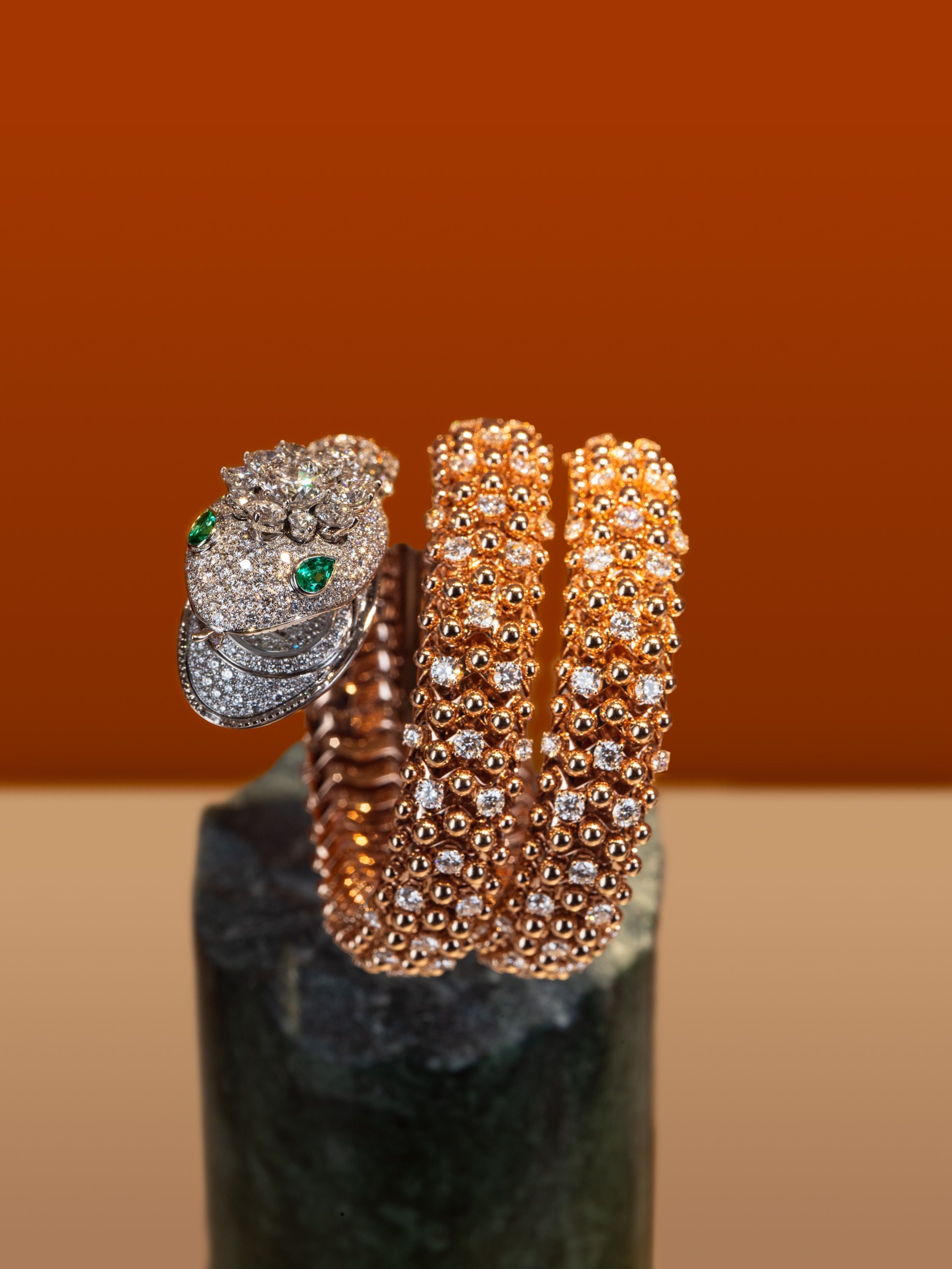
Chapter 1 of Serpenti Infinito looks back in time to explore the serpent’s mythic and spiritual dimensions. So, alongside tantric drawings from the 15th century and bronze sculptures that depict dance movements of the Natya Sastras, there is a rare curation of 11 pieces from the Bvlgari archives. This includes the high jewellery house’s signature Tubogas watches that loop around the wrist, a design that echoes both the articulated tubes used to carry gas in 1948 when they were introduced (hence the name) and the deft movement of the snake. Look out for the most iconic of these: a five coil Serpenti Pallini bracelet-watch in yellow-gold with a diamond-set head dating to around 1955.
House of mirrors
If an art exhibition today didn’t have an Instagrammable moment, did it even happen? While photo ops are plenty at this exhibit, the most popular one (if social media is anything to go by) is Turkish-American new media artist Refik Anadol’s AI-powered, dynamic installation set within a 360-degree mirrored room. The shifting imagery in the space was shaped by machine learning algorithms trained on natural snake forms—a reminder of the reptile’s ability to repeatedly shed its skin.


